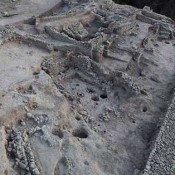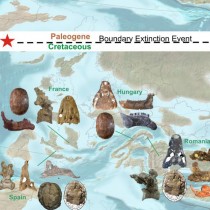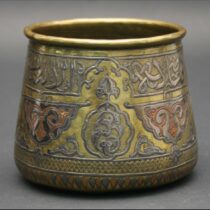A small cave high in the Pyrenees has yielded a chilling glimpse into prehistoric life—and death. At the burial site of Roc de les Orenetes, nestled in the mountains of Girona in northeastern Spain, archaeologists have discovered a human rib with a flint arrowhead still embedded in it. Shot from behind more than 4,000 years ago, the projectile offers undeniable proof of interpersonal violence during Europe’s third millennium BCE.
What makes the find even more extraordinary is the state of the bone: it shows signs of healing. The victim survived the attack—at least for a while.
The discovery was made during the most recent excavation led by Dr. Carlos Tornero, prehistory professor at the Universitat Autònoma de Barcelona and researcher at the Institut Català de Paleoecologia Humana i Evolució Social (IPHES-CERCA). Alongside his team, Tornero is reconstructing the lives—and deaths—of the people who once called this rugged landscape home.
A burial cave with generational depth
Roc de les Orenetes served as a funerary site for two to three centuries, holding the remains of at least 60 individuals, likely members of a closely knit community. The cave has yielded over 6,000 bone fragments to date, now under analysis by Dr. Miguel Ángel Moreno, osteoarchaeologist at the University of Edinburgh.
This population was physically robust, adapted to mountain life. Their skeletons show signs of heavy labor, likely related to herding and harvesting mountain resources. The consistent use of the same burial space across generations hints at a strong emotional and spiritual bond to the land.
But these bones also tell of hardship and conflict. Prior excavations revealed injuries caused by axes, daggers, and flint arrows. Until now, though, archaeologists weren’t sure whether the arrows were symbolic grave goods or weapons used in violence.
A violent moment preserved in bone
This latest find leaves no ambiguity. The flint arrow entered the body from behind and lodged between the ribs—evidence of a surprise attack. Bone regrowth around the point suggests that the victim lived long enough for healing to begin. According to Moreno, this kind of forensic detail allows researchers to reconstruct the moment of impact, the type of weapon used, and even the posture and position of attacker and victim.
Dr. Tornero notes that such an injury might have been instantly fatal—by damaging the lungs or causing hemorrhage—or might have led to death days or weeks later, due to infection. If the body successfully encapsulated the arrowhead, the individual may have survived the attack and died of unrelated causes later.
To better understand the injury and its effects, the rib fragment is undergoing high-resolution X-ray imaging at CENIEH (the National Research Center on Human Evolution in Burgos), followed by chemical and genomic testing in labs in Barcelona and the U.S.
A frozen scene of Prehistoric conflict
This arrow-wound offers a rare, almost cinematic glimpse into a single moment of prehistoric violence—a time when survival depended not only on withstanding the elements but also on withstanding each other.
The Roc de les Orenetes site is becoming a vital window into the complexity of early human communities in southern Europe. Though earlier evidence of axe wounds and broken bones suggested conflict, this arrow confirms it. It captures a story of sudden aggression, brief endurance, and a life cut short in the shadow of the mountains.



